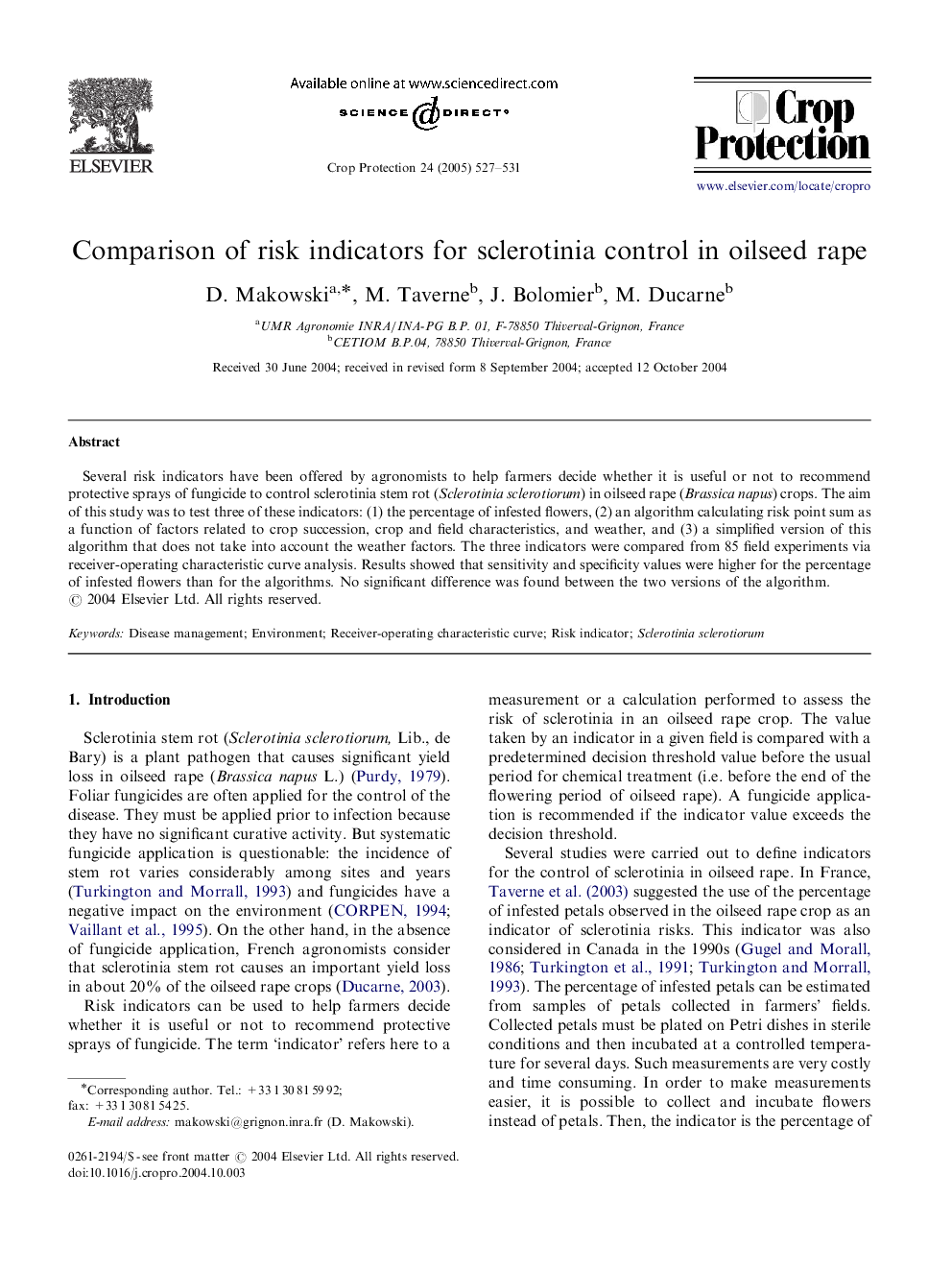| Article ID | Journal | Published Year | Pages | File Type |
|---|---|---|---|---|
| 9473099 | Crop Protection | 2005 | 5 Pages |
Abstract
Several risk indicators have been offered by agronomists to help farmers decide whether it is useful or not to recommend protective sprays of fungicide to control sclerotinia stem rot (Sclerotinia sclerotiorum) in oilseed rape (Brassica napus) crops. The aim of this study was to test three of these indicators: (1) the percentage of infested flowers, (2) an algorithm calculating risk point sum as a function of factors related to crop succession, crop and field characteristics, and weather, and (3) a simplified version of this algorithm that does not take into account the weather factors. The three indicators were compared from 85 field experiments via receiver-operating characteristic curve analysis. Results showed that sensitivity and specificity values were higher for the percentage of infested flowers than for the algorithms. No significant difference was found between the two versions of the algorithm.
Keywords
Related Topics
Life Sciences
Agricultural and Biological Sciences
Agronomy and Crop Science
Authors
D. Makowski, M. Taverne, J. Bolomier, M. Ducarne,
